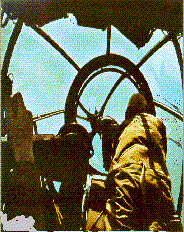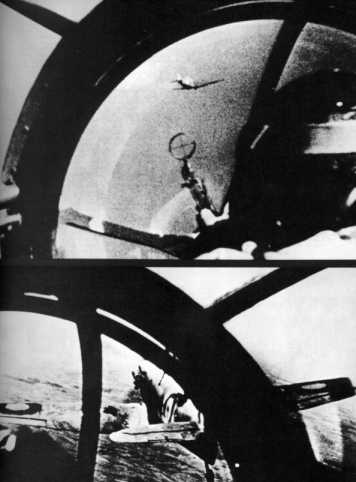Heinkel He 111

|
This German four/five-seat bomber was in service from 1937-45 (Spain
until 1965). Designed by the Günter brothers, who liked curving
elliptical wings and tails, the He 111 made a name for itself in 1935
as a civil airliner, and later as a bomber that made world records for
speed while carrying a heavy load. In 1938 the first mass-production
versions, the four-seat He 111E and F, did very well in the Spanish
Civil War, dropping heavy bomb loads and proving too fast for
Republican fighters to catch easily. Thus the three hand-aimed machine
guns carried by these aircraft appeared adequate. The E, used in large
numbers by the prewar Luftwaffe, carried eight 250kg bombs, dropped
tail-first from vertical cells in the beautifully streamlined fuselage
to tumble end-over-end in a way that rivals said spoilt accuracy. But
by the time World War II broke out the standard production model was
quite different. The He 111P had broad straight-tapered wings, and an
odd offset nose with no separate cockpit for the pilot. With two
1100hp DB 601A engines it was only slightly slower than the earlier
models at 395km/h, but with full bomb load it was slower still. During
most of the war the production version was the H-series with 1,350hp
Jumo 211F engines. Despite the higher power these were so burdened by
bombs, missiles and extra protection that few exceeded 352km/h. It was in the Battle of Britain that the He 111 was recognized as vulnerable when intercepted by modern fighters. By May 1941 the RAF's radar-equipped Beaufighters could even shoot the waddling Heinkels down at night, though in the 1940 Blitz they devastated many of Britain's cities, especially in the Coventry raid aided by navigation device. In Russia in 1941 they were again able to bomb effectively, but despite being laden with extra guns and armor the He 111 was never again to be a real menace. Because the Luftwaffe had no replacement, the old Heinkel, called "The Spade" by its crews, stayed in production until the end of 1944, long after it had become obsolescent. About 7,300 were built, and most of the final batches were equipped to launch the V-1 flying bombs against English cities after the ground launch sites had been captured. There were many special versions, including torpedo carriers, magnetic-mine cleansers and barrage-balloon-cable cutters. The strangest was the He 111Z for towing the Me 321 glider; it had two He 111's joined on a singel wing, with a fifth engine in the center. |




